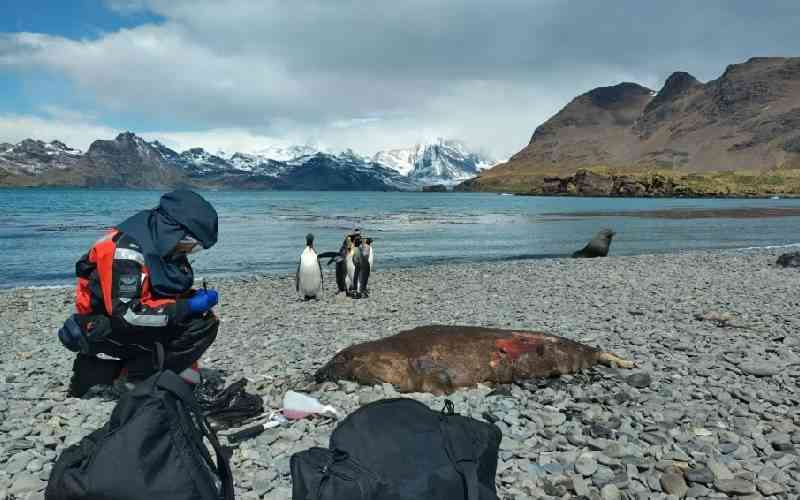Kisumu County's open dumpsite is threatening the well-being of residents. The solid waste, which usually ends up at the Kachok dumpsite, is estimated to produce about 27,094 metric tonnes of methane gas.
Increased concentration of methane gas culminates in cardio-respiratory failure, eventually leading to death. It could also cause nausea, vomiting, depression and lack of co-ordination.
The county’s bio-energy and climate change officer, Lorna Omuodo, says the county produces 437 metric tonnes of solid waste per day.
“One metric tonne of waste generates about 62 metric tonnes of methane per day,” she says.
The concerns are supported by a study conducted between 2007 and 2010 and published by the Public Library of Science journal. The study, Etiology and Incidence of Viral and Bacterial Acute Respiratory Illness among 3,406 Older Children and Adults, was conducted in Western Kenya.
A health needs assessment paper for Kisumu prepared in January 2011 by Moumié Maoulidi also mentioned respiratory infections as one of the ailments affecting area residents. It revealed that Streptococcus pneumoniae was the most common bacteria.
Respiratory syncytial virus, a major cause of respiratory illness in children, and Human metapneumovirus, which causes upper and lower respiratory tract infections, were also found to be prevalent.
Omuodo says apart from causing respiratory problems, the gas also doubles the global warming predicament that causes the county to experience extreme weather patterns.
“If we don't strategise how to achieve a low carbon economy, then we should expect worse weather patterns not only in Kisumu but also in the entire country,” says Omuodo.
She adds that the methane gas produced ends up in Lake Victoria yet the lake has no plants to absorb the gas (the way sea plants do), posing a risk to the environment and residents.
For this reason, the county government has sought the help of Global Waste to Energy and Integrated Basic Infrastructure Services to invest in waste management and has signed a multi-million shilling memorandum of understanding on waste management and reuse.
Kisumu City Manager Doris Ombara says the two companies will finance the project at a cost of approximately Sh7 billion.
“The Kisumu Urban Project has an allocation of Sh1.5 billion for investing in a landfill,” says Ombara.
She says construction of the mechanical processor is expected to take effect one month after they get ratification from the national government.
“We expect the landfill to be ready 15 months after ratification. Unlike normal landfills, this one will be enclosed like in a factory set-up and nothing will go to waste because we will produce biodegradable fertilisers and energy,” she says.
Stay informed. Subscribe to our newsletter
The methane gas from the waste will be used in the production of energy for use.
The waste will be collected and sorted in six transfer stations and the energy harvested will be generated and supplied to households and industries around.
 The Standard Group Plc is a
multi-media organization with investments in media platforms spanning newspaper
print operations, television, radio broadcasting, digital and online services. The
Standard Group is recognized as a leading multi-media house in Kenya with a key
influence in matters of national and international interest.
The Standard Group Plc is a
multi-media organization with investments in media platforms spanning newspaper
print operations, television, radio broadcasting, digital and online services. The
Standard Group is recognized as a leading multi-media house in Kenya with a key
influence in matters of national and international interest.
 The Standard Group Plc is a
multi-media organization with investments in media platforms spanning newspaper
print operations, television, radio broadcasting, digital and online services. The
Standard Group is recognized as a leading multi-media house in Kenya with a key
influence in matters of national and international interest.
The Standard Group Plc is a
multi-media organization with investments in media platforms spanning newspaper
print operations, television, radio broadcasting, digital and online services. The
Standard Group is recognized as a leading multi-media house in Kenya with a key
influence in matters of national and international interest.








